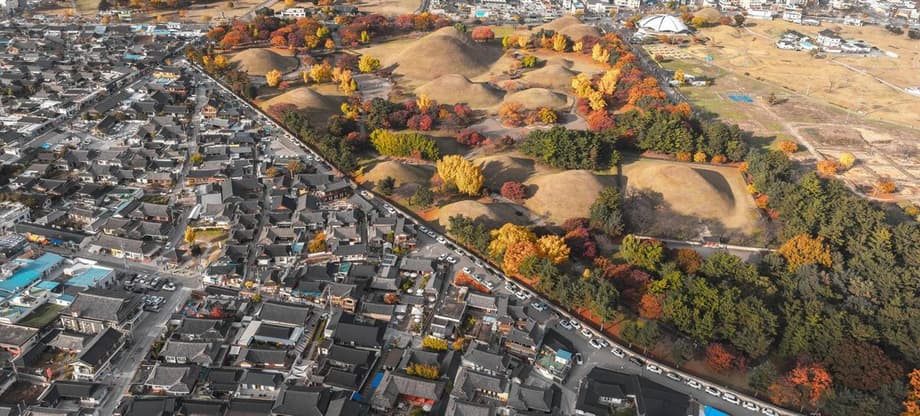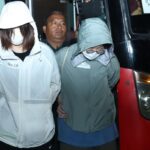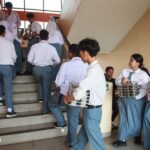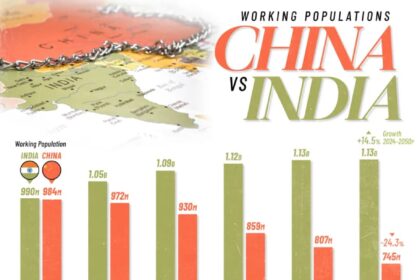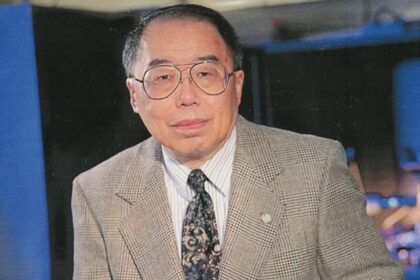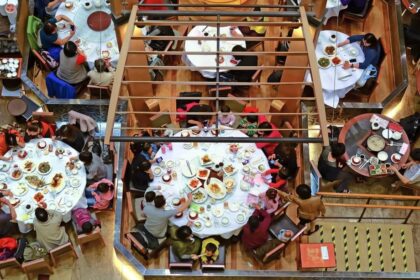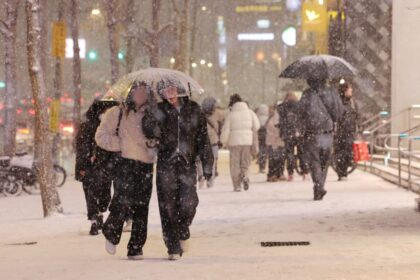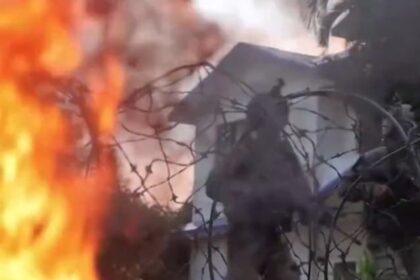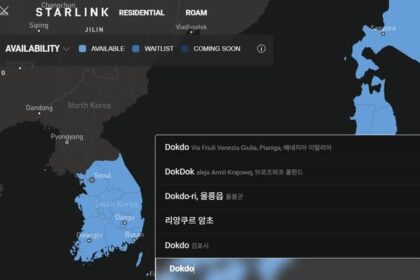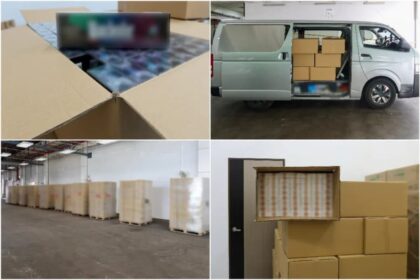A city where ancient capital meets global summit
Gyeongju is preparing to host the Asia Pacific Economic Cooperation Leaders’ Meeting from Oct. 31 to Nov. 1, and the setting could not be more symbolic. Often called a museum without walls, the former capital of the Silla Kingdom blends royal tomb mounds, temple complexes, palace ruins and stone Buddhas into the daily life of a modern city. The summit brings presidents, prime ministers and business leaders into a place where history sits in the open air, not behind glass.
- A city where ancient capital meets global summit
- Why Gyeongju matters in 2025
- Silla roots, living heritage
- Preserving the past, and the colonial chapter
- New discoveries on the eve of the summit
- Culture on stage for visiting leaders and guests
- Technology meets tradition at Cheomseongdae
- A city ready to host
- Heritage protection and daily life
- Economic stakes and long term gains
- What is on the agenda
- What to Know
Known as Seorabeol in antiquity, Gyeongju lies in a protective basin and served as the Silla capital for nearly a thousand years. During the Unified Silla era, historians estimate the city had close to one million residents, placing it among the largest in the world at the time. The Gyeongju Historic Areas, inscribed on the UNESCO World Heritage List in 2000, span sites like Bulguksa Temple, the Seokguram Grotto and Cheomseongdae Observatory. The landscape recalls Athens and Rome, where sacred monuments and royal tombs still shape the skyline.
This year’s APEC discussions will focus on trade, digital frameworks and sustainable growth. Holding those conversations in Gyeongju places them within a long arc of Korean statecraft, art and science. South Korea has set the host theme, “Building a Sustainable Tomorrow: Connect, Innovate, Prosper.” Leaders will move between meeting rooms and royal parkland, from convention tables to media art projected across ancient tombs. The setting is more than aesthetic. It suggests that long term progress rests on cultural memory and careful stewardship.
Why Gyeongju matters in 2025
South Korea is hosting APEC for the second time since Busan in 2005. The forum brings 21 member economies for a week of senior officials’ sessions, ministerial meetings, a CEO summit and the leaders’ gathering. Organizers expect more than 20,000 participants, including government delegates, business executives and journalists. Choosing Gyeongju reflects a national effort to bring major events beyond mega cities and to showcase a venue that unites heritage with modern capability.
Diplomatic choreography is intense. Seoul is working to host US President Donald Trump and Chinese President Xi Jinping on state visits around the summit. Officials say a possible meeting between the two leaders, once floated for the sidelines, remains under review. Trade frictions between Washington and Beijing, and separate South Korea United States talks over a 25 percent reciprocal tariff and investment commitments, add urgency to the agenda. The stakes are large even if the photo schedule shifts.
Silla roots, living heritage
For nearly a thousand years, the Silla Kingdom (57 BCE to 935 CE) governed from Gyeongju. Queen Seondeok, the first female sovereign on the Korean Peninsula, reigned from 632 to 647. She championed works like Bunhwangsa Temple and Cheomseongdae, a stone tower used for observing the sky. King Munmu ruled from 661 to 681 and is remembered for completing the unification of Silla, Baekje and Goguryeo, and for resisting the Tang dynasty. Silla rule ended in 935 when the last monarch, King Gyeongsun, yielded to the rising Goryeo Dynasty.
Buddhism flourished during Silla and shaped art and city planning. The slopes of Mount Nam hold stone carvings and temple remains. Bulguksa Temple and Seokguram Grotto survive as worship sites and masterpieces of stonework and geometry. Monks such as Uisang (625 to 702) developed schools of thought that influenced ritual, architecture and education. The result is a cultural landscape where faith, governance and science interlaced.
Preserving the past, and the colonial chapter
In the early twentieth century, Gyeongju entered a complicated era under Japanese colonial rule. Archaeological digs expanded and the city opened its first museum. Research advanced knowledge of Silla graves and artifacts, yet colonial authorities also used heritage to serve their political narrative. It is a reminder that excavation can carry power as well as insight.
In 1926, Japan hosted Sweden’s Crown Prince Gustav VI Adolf, an archaeology enthusiast, at the Seobongchong Tomb. The visit was staged to win favor, and it placed Gyeongju’s antiquities before European eyes. Decades later, Japanese writer Kazue Morisaki recalled growing up in Gyeongju in her essay collection “Gyeongju Is the Sound of Mother Calling,” describing a small city where tombs and statues shaped daily life even under colonial rule.
After liberation in 1945, Korea reframed Gyeongju as a foundation of identity and a driver of tourism. The 1970s saw the creation of the Bomun tourist complex beside Bomun Lake. In 2000, UNESCO listed the Gyeongju Historic Areas. City and national agencies invested in preservation, signage and access so that open air sites could be studied and visited without losing integrity.
New discoveries on the eve of the summit
Archaeologists recently confirmed a wooden chamber tomb beneath the Hwangnam-dong No. 120 mound in the heart of the royal tomb district. Inside, they found the remains of a man believed to be a Silla commander or noble, buried with a sword, full body armor and a helmet. Nearby lay the skeleton of an attendant, likely interred in a retainer sacrifice. Armor and protection for a horse were preserved, only the second time horse armor has been found in a Silla tomb. Preliminary analysis suggests the commander died in his early thirties.
Fragments of a gilt bronze crown emerged from the burial layer and may be the oldest piece of its kind from Silla yet found. Decorative details show signs of exchange with neighboring cultures, including motifs similar to Goguryeo designs. The burial’s mixed features also document a transition in Silla funerary practice from simple wooden coffins to more complex tombs with stone and earth.
The site will open to visitors during the APEC week, and key relics will be displayed in Gyeongju at the National Research Institute of Cultural Heritage. The timing is not accidental. Officials want delegates and travelers to see new evidence for Silla’s military organization and art up close.
Culture on stage for visiting leaders and guests
Much of Gyeongju’s programming during the summit is designed to bring Silla culture alive. A large series of traditional arts performances titled Seorabeol Pungnyu, backed by the Ministry of Culture, Sports and Tourism and the Korean Traditional Performing Arts Foundation, has filled weekends across September and October in Gyochon Traditional Village and at Yukbuchon, a hanok district that houses the nation’s first international convention space. The lineup features 37 shows by 31 groups and around 700 performers, including music, dance, theater and creative gugak, the term for Korean traditional music. In the final stretch before APEC, national ensembles such as the National Gugak Center and Gyeonggi Sinawi Orchestra perform on a stage near Cheomseongdae. The Jeongdong Theater Arts Group presents “Pure Heart” from Oct. 31 to Nov. 4 at Gyeongju Expo Grand Park.
A new media art exhibition inside the Daereungwon tomb park casts light and color over royal mounds through mid November. Visitors can enter Cheonmachong Tomb free of charge during the event and take part in activities like caricature drawing, stamp tours and lantern making. The city has organized 11 themed itineraries that spread across 20 heritage and nature sites, from half day to evening to full day routes. On Oct. 31, the APEC Music Festa at Bomun Lake brings together female artists from economies across APEC, with solo and collaborative performances. In cafes and public walls around the Hwangridan area and Expo Park, the APEC AI XR Alley Cinema screens selections from a regional film festival that blends artificial intelligence and extended reality with cinematic storytelling. During summit week, the Five Hans Experiences at Gyeongju Arts Center introduce visitors to hanbok (traditional clothing), hangeul (the Korean alphabet), hanji (paper), hanok (architecture) and hansik (cuisine). A Cross Culture Festival showcases traditional and fusion Korean music alongside folk arts from other APEC members. A fashion show at Woljeong Bridge displays modern hanbok designs against a Silla style backdrop.
These programs are not just spectacle. They provide shared experiences that explain what terms like hwarang (Silla youth elites), gugak and hanbok mean to Koreans today. They also show how digital art can interpret antiquity without replacing it.
Technology meets tradition at Cheomseongdae
Cheomseongdae Observatory, often cited as one of the oldest surviving astronomical observatories in Asia, has become a nighttime canvas. A projection show titled “Time of the Stars” turns the stone tower into a storytelling surface, with scenes of an ancient observer climbing to watch the sky. The Milky Way, meteor showers and comets stream across the structure, swelling from base to capstone.
The program folds in Korea’s scientific record, including imagery from a Joseon period celestial chart that maps 1,467 stars and the 28 constellations used in East Asia. The four guardian animals of the cardinal directions, the Blue Dragon, White Tiger, Vermilion Bird and Black Tortoise, appear in sequence. The show runs nightly through Nov. 1 and is free to the public. Organizers say they may continue it beyond the summit if it draws strong responses.
A city ready to host
Venue and service upgrades touch nearly every part of the visitor experience. The Hwabaek International Convention Centre, named after a Silla council of nobles, has been expanded and modernized to anchor ministerial and leaders’ sessions. Hotels at the Bomun tourist complex carry signage such as APEC Partner Accommodation and have added bilingual menus. Roads have been repaved, security fencing installed and golden lighting strung along lakeside streets. The province invested billions of won in lighting and sculptures, including a 15 meter monument inspired by the legend of King Hyeokgeose hatching from an egg. Staff are testing translation devices, halal kitchens and QR based shuttle systems.
Prime Minister Kim Min seok has treated the summit as a test of national prestige. His office has ordered ministries to prevent discomfort for visitors and to curb xenophobic rallies that could mar the event. He has visited Gyeongju multiple times to inspect hospitals, police detachments and the convention site. A remodeled emergency medical wing stands ready with 333 staff members, five air ambulances and 29 partner hospitals on call. In an October address about Hangeul, the Korean writing system, he also promised to expand King Sejong Institutes worldwide.
Kim has framed the meaning of the gathering in simple terms.
APEC is not merely a diplomatic event, but a chance to show who we are as a nation.
Heritage protection and daily life
City officials stress that Gyeongju’s strength is authenticity, not skyline. Strict building codes prevent high rise construction, and any excavation can trigger archaeological review. Improvements for APEC, from parking lots to public squares, are defined and modest by design. That approach helps maintain the atmosphere that draws travelers in the first place and protects what lies underground.
Residents often repeat a line that captures the reality of living in an open museum.
You cannot dig in your own yard in Gyeongju, or you will find artifacts.
Economic stakes and long term gains
The Korea Chamber of Commerce and Industry projects that APEC 2025 could generate around 7.4 trillion won, roughly 5.2 billion US dollars, for Gyeongju and the surrounding region. Beyond the short term boost, the summit elevates the city’s global profile and may help secure future high level gatherings in nearby hubs such as Pohang or Daegu. The city also continues to grow as a meetings and events destination. The convention centre is supported by venues like Gyeongju National Museum, Expo Park and Hwangnyongwon. The newly rebranded Sono Calm Gyeongju, upgraded from the former Sono Belle, offers a presidential suite, banquet halls, seminar rooms and a spa, with a location that doubles as a base for cultural excursions.
Delegates will find a calendar that mixes dialogue and exploration. Team workshops can include wearing hanbok, craft classes and temple stays that offer quiet reflection. The Bomun area supports cycling and boating. Many of these activities link visiting executives, students and journalists with local artisans and monastics, which brings welcome spending to small businesses.
What is on the agenda
APEC is a forum for voluntary economic cooperation. Members pursue growth through easier trade and investment, shared standards and projects on topics like digital connectivity and climate action. The 2025 host theme highlights sustainability, innovation and ties across borders. In practice, much of the attention will center on meetings among the largest economies and the ripple effects of their decisions.
Seoul has worked to arrange back to back state visits by the US and China around the summit window. The possibility of a direct meeting between the two leaders is still being reviewed. South Korea and the United States have been pushing to conclude trade talks that involve a 25 percent reciprocal tariff and a large investment package. North Korea will not attend. Even without a dramatic breakthrough, the setting and schedule bring partners into the same rooms at a delicate moment.
What to Know
- APEC Leaders’ Meeting runs Oct. 31 to Nov. 1 in Gyeongju, South Korea.
- Gyeongju served as the Silla capital for nearly 1,000 years and is a UNESCO World Heritage city.
- A new Silla tomb in Hwangnam-dong reveals armor, horse gear and fragments of a gilt bronze crown.
- Cheomseongdae hosts a nighttime projection show, free to the public through Nov. 1.
- Cultural programs include Seorabeol Pungnyu shows, a media art exhibition at Daereungwon and the APEC Music Festa at Bomun Lake.
- Organizers expect more than 20,000 participants and have upgraded venues, medical readiness and visitor services.
- Potential back to back visits by the US and Chinese leaders are under review.
- KCCI estimates around 7.4 trillion won in economic gains for the region.
- Strict building codes and archaeological reviews continue to protect Gyeongju’s heritage.
- The summit theme focuses on sustainability, innovation and connectivity.


